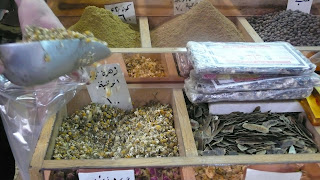I arrived in Beirut on Thursday which was the exact same day that Ban Ki-Moon, the new UN Secretary General was on a visit to Lebanon. One of many trying to resolve the political deadlock gripping the country since September.

Beirut was quite congested due to road closures during the movements of Ban Ki Moon in the town. On Friday, I took a taxi and drove to Damascus (2h30 from Beirut). I booked a room at Beit Al Mamlouka, a restored Syrian 17th Century residence with 8 beautifully decorated rooms, situated in the Christian quarters of the Old City of Damascus.

This is the main courtyard. Each brown door is an entrance to a room.

On the second level of the house, there were 3 rooms restored, apprently used during the winter months, due to the fact that it caught the sun and warmed up the rooms considerably. These are the typically Syrian lamps above the room entrances.

This is the terrace at the top of the house.

The view of the Old City, Mosque and Church beside eachother.

View of Damascus, Old and New City

Each room has been restored and decorated differently from the next. Here are some photos of the inside of mine.
The light on the wall

These cushions are made with pure cotton made in Syria. I am planning to get some for the same purpose for one of the rooms in my flat in Beirut. It has been restored in a Syrian style, where these cushions would look great.

The mirror

The cupboard built inside the wall for hanging clothes, made with nacre (also known as Mother of Pearl).

This is a photo of the ceiling with the nice reflections of the light against the walls

Bathroom door

Walking through the Old City, I took some photos. Here is a typical street.

The striking thing when you enter Syria, especially in Damascus, is the sheer number of posters and photographs of President Bashir Al Assad.
His father, Hafiz al-Assad died in 2000, after 30 years in power. Immediately following al-Assad's death, the Parliament amended the constitution, reducing the mandatory minimum age of the President from 40 to 34, which allowed his son, Bashir, to become legally eligible for nomination by the ruling Baath party. On July 10, 2000, Bashir was elected President by referendum in which he ran unopposed, gathering 97% of the vote.

Syrian and Palestinian flags layed out above some metal workers in the Old City

Next to the workers, a sign to the Umayyad Mosque, signals we are near.

The Umayyad Mosque is one of the largest and oldest mosques in the world. Located in one of the holiest sites in the old city, it is of great architectural importance.

The tomb of Salahadin stands in a small garden adjoining the north wall of the mosque.

The mosque holds a shrine which is said to contain the head of John the Baptist, honoured as a prophet by Muslims and Christians alike. The head was supposedly found during the excavations for the building of the mosque. This is the shrine.

This is the esplanade of the mosque before entering the praying area.


One of the walls of the mosque. In 2001 Pope John Paul II visited the mosque, primarily to visit the relics of John the Baptist. It was the first time a pope paid a visit to a mosque.

A Muslim woman taking a photo inside the praying area.

On the ceiling looking up from the praying area

Marble walls and a golden shrine

One of the gates to the Mosque on our way out.

While walking back to Al Mamlouka, I stopped at a herbs and spices seller, we bought fresh camomille to make tea.







































